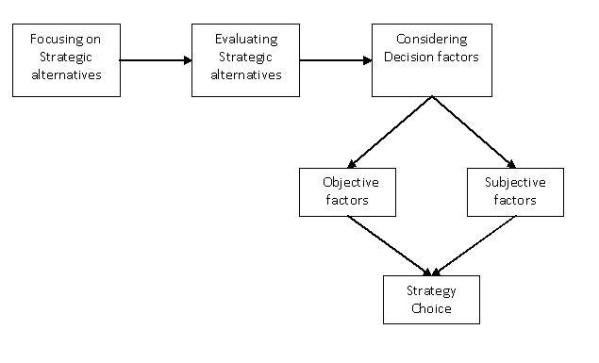Choice of Strategy
05/03/2020Strategic choice is a systemic theory of strategy. This theory is built on a notion of interaction in which organizations adapt to their environment in a self-regulating, negative-feedback (cybernetic) manner so as to achieve their goals. The dynamics, or pattern of movement over time, are those of movement to states of stable equilibrium. Prediction is not seen as problematic. The analysis is primarily at the macro level of the organization in which cause and effect are related to each other in a linear manner. Micro-diversity receives little attention and interaction is assumed to be uniform and harmonious.
Importance of Strategic Choices
Whether a business succeeds or fails depends in large measure on the strategic choices made by the owner. Spending large amounts of time and money introducing a product that turns out to have a very limited market is an example of a bad strategic choice. Anticipating a change in consumer tastes and introducing a service to take advantage of that change before competitors do is an example of a good strategic choice. The development of business strategy takes into account that all companies must cope with limited resources to some extent. The most successful companies can allocate scarce resources to the projects that have the greatest positive impact on revenue growth or improvements in productivity and efficiency that can increase profit margins.
Strategic Choice Process

(I) Focusing on strategic alternatives: It involves identification of all alternatives. The strategist examines what the organization wants to achieve (desired performance) and what it has really achieved (actual performance). The gap between the two positions constitutes the background for various alternatives and diagnosis. This is gap analysis. The gap between what is desired and what is achieved widens as the time passes if no strategy is adopted
(II) Evaluating strategic alternatives: The next step is to assess the pros and cons of various alternatives and their suitability. The tools which may be used are portfolio analysis, GE business screen and corporate Parenting.
(iii) Considering decision factors:
(a) Objective factors:
- Environmental factor
- Volatility of environment
- Input supply from environment
- Powerful stakeholders
- Organizational factors
- Organization’s mission
- Strategic intent
- Business definition
- Strengths and weaknesses
(b) Subjective factors:
- Strategies adopted in the previous period
- Personal preferences of decision- makers
- Management’s attitude toward risk
- Pressure from stakeholder
- Pressure from corporate culture
- Needs and desires of key managers.